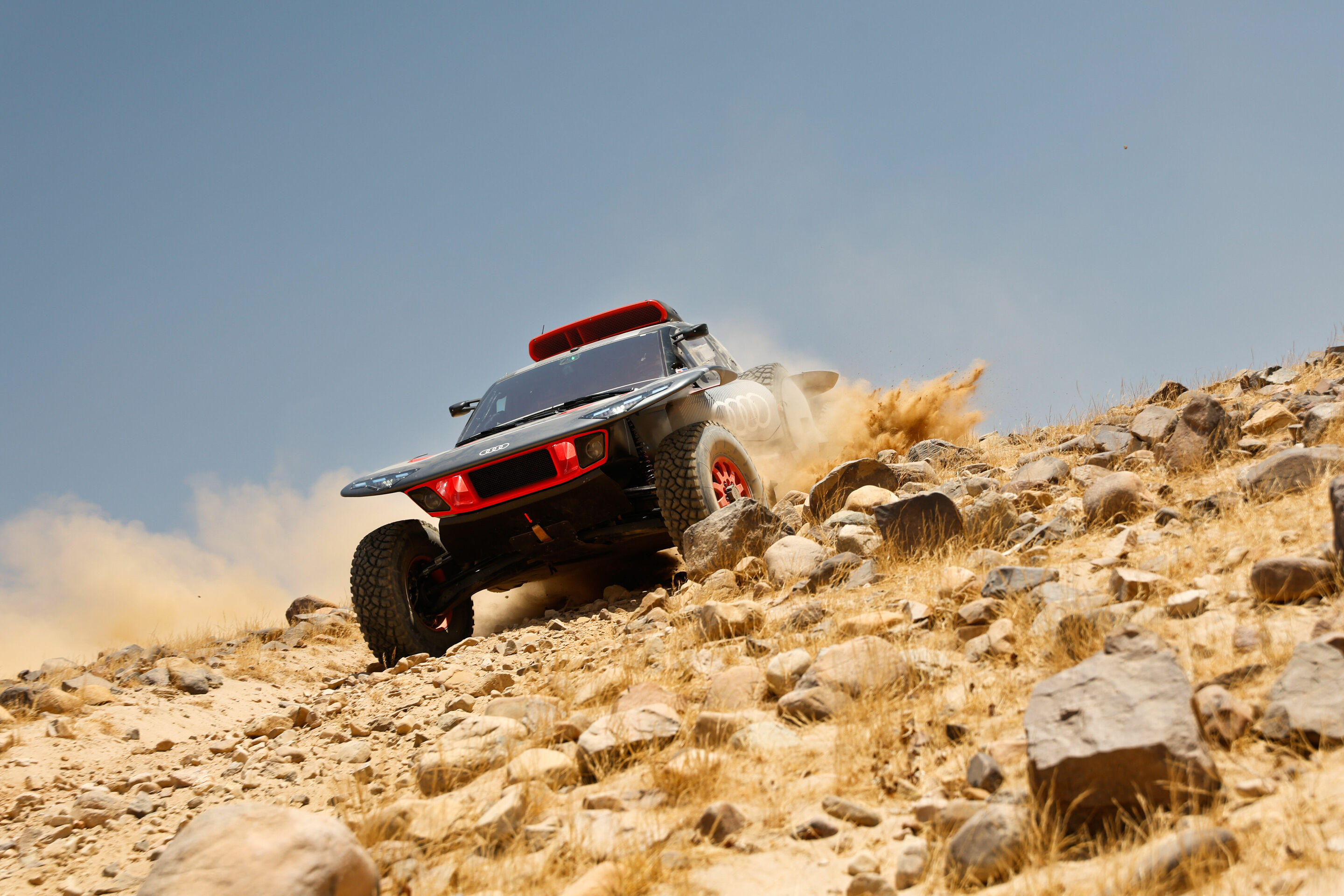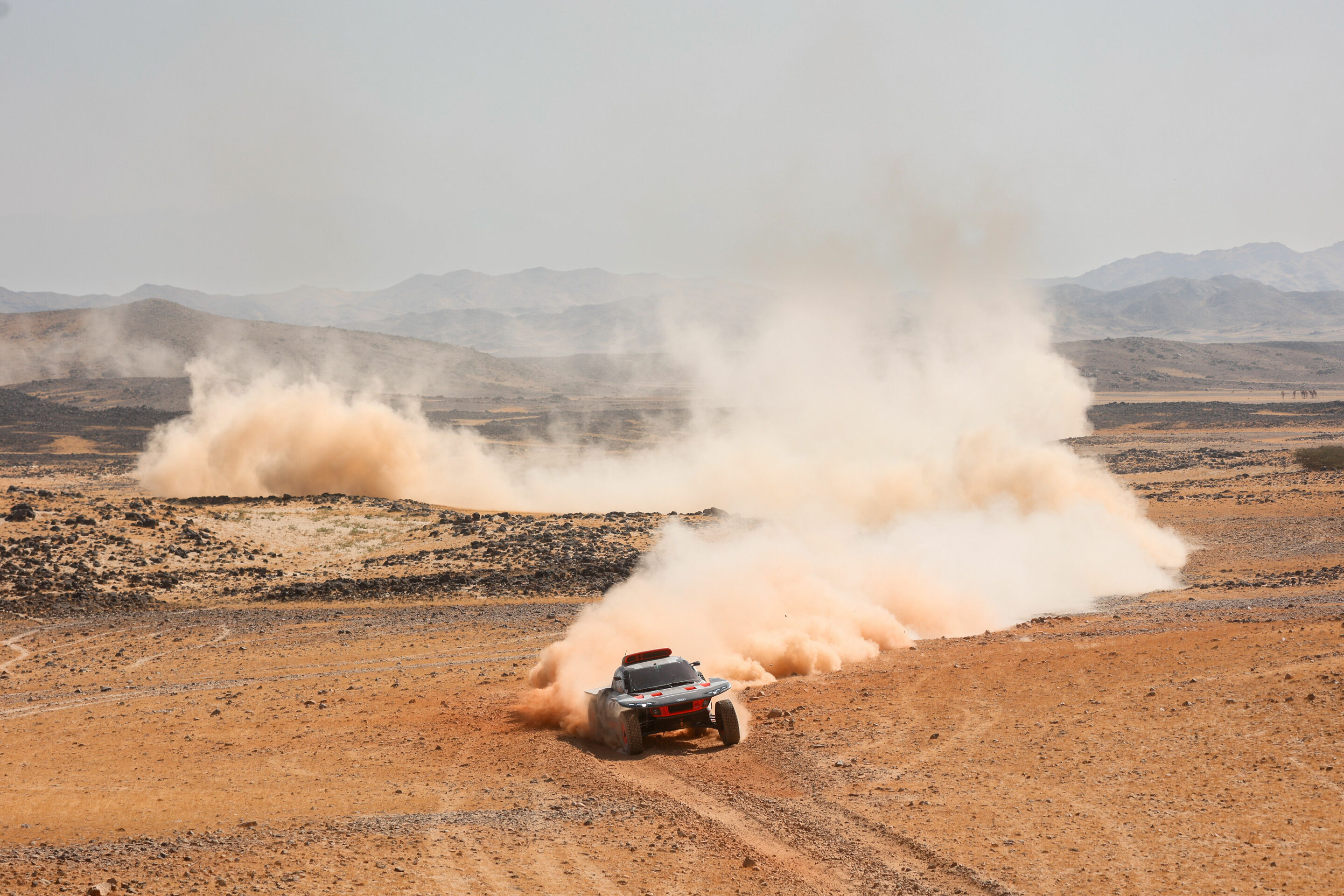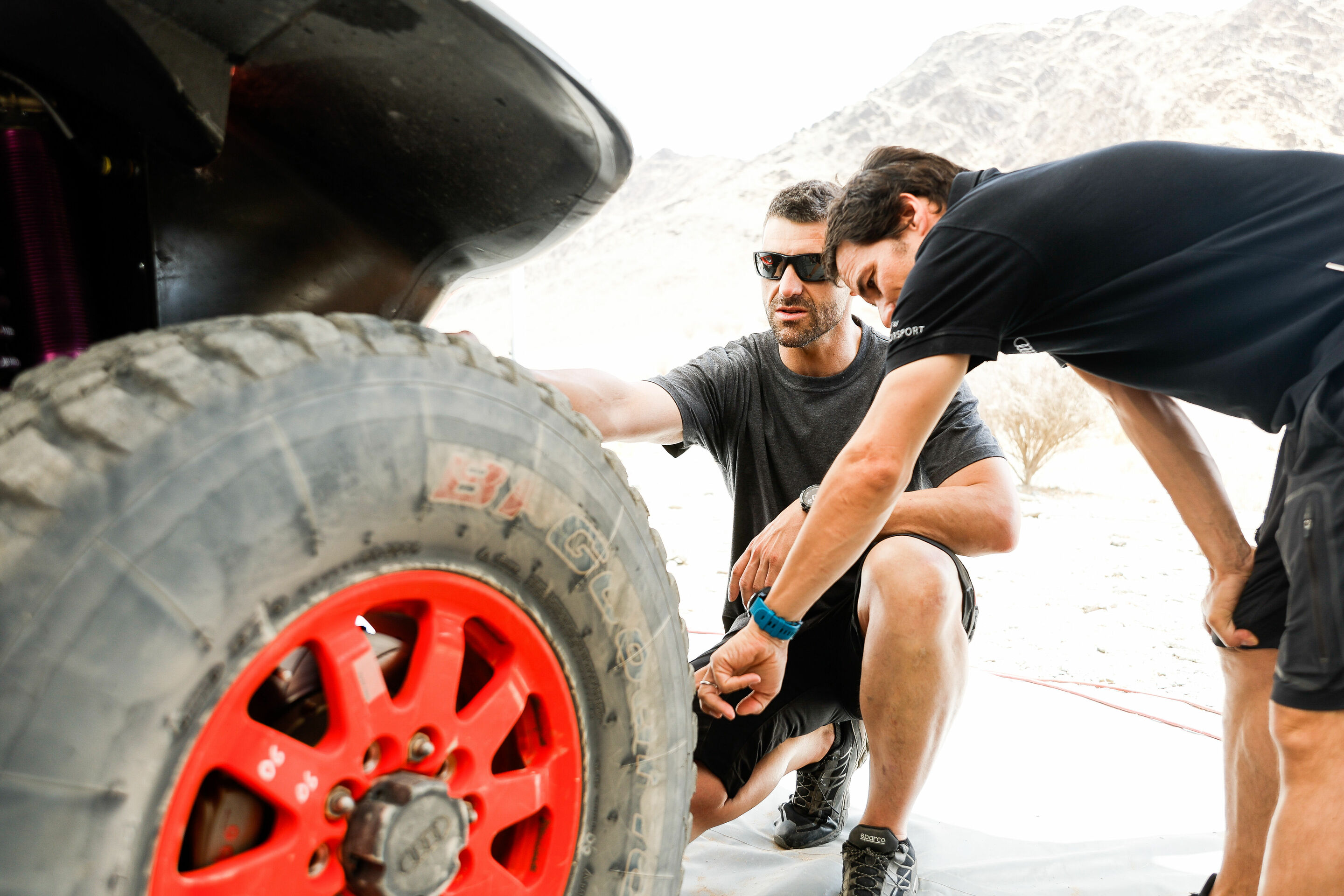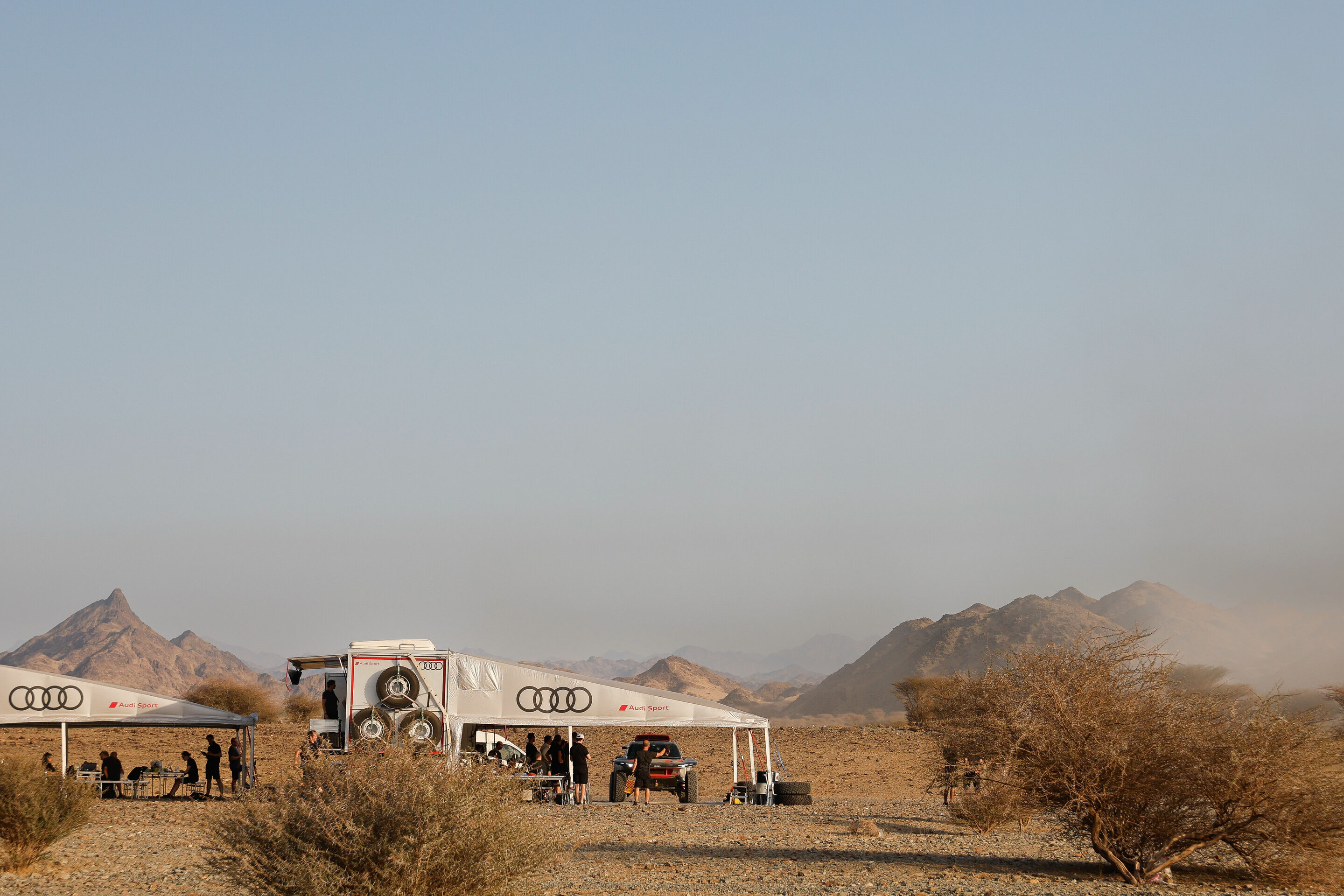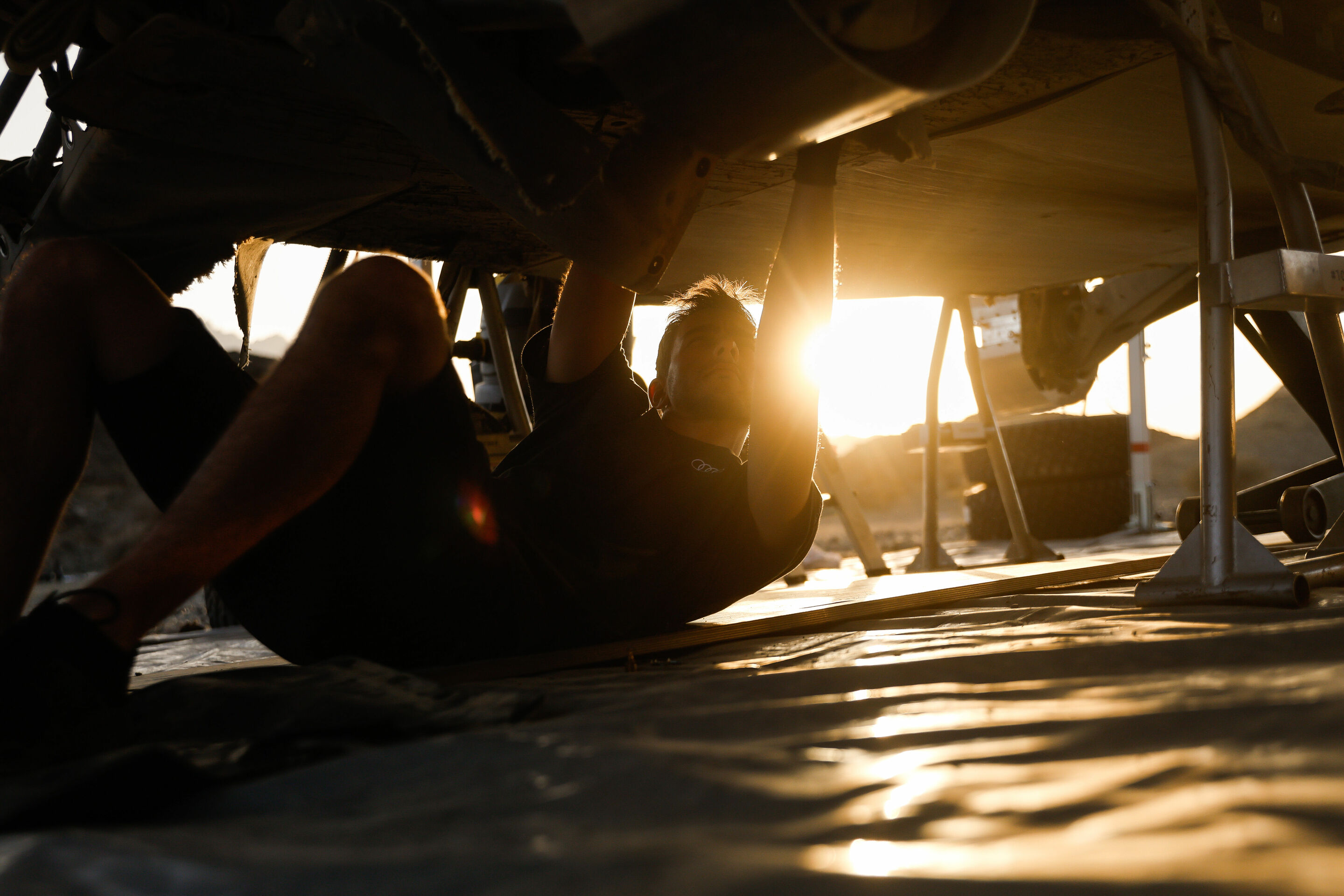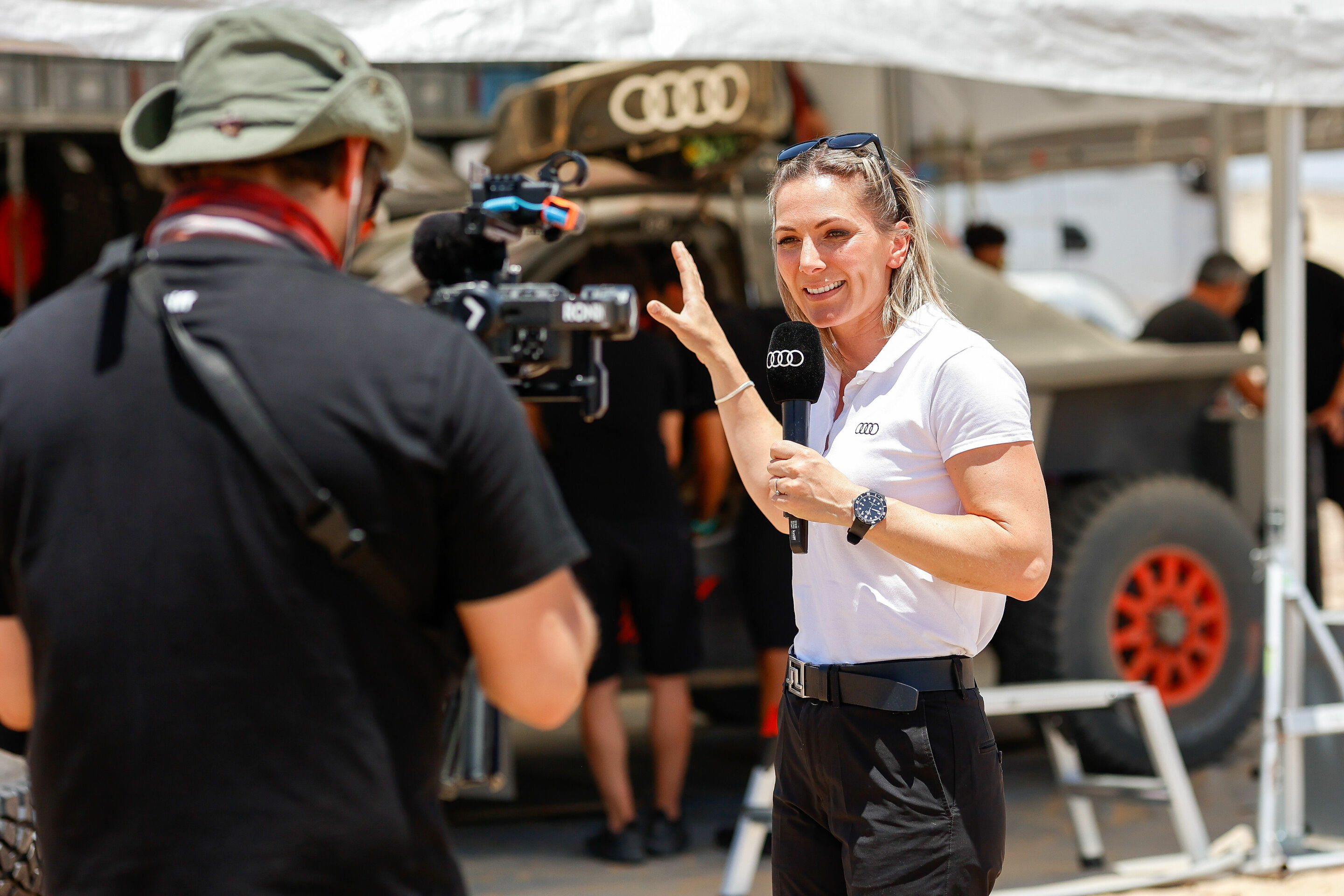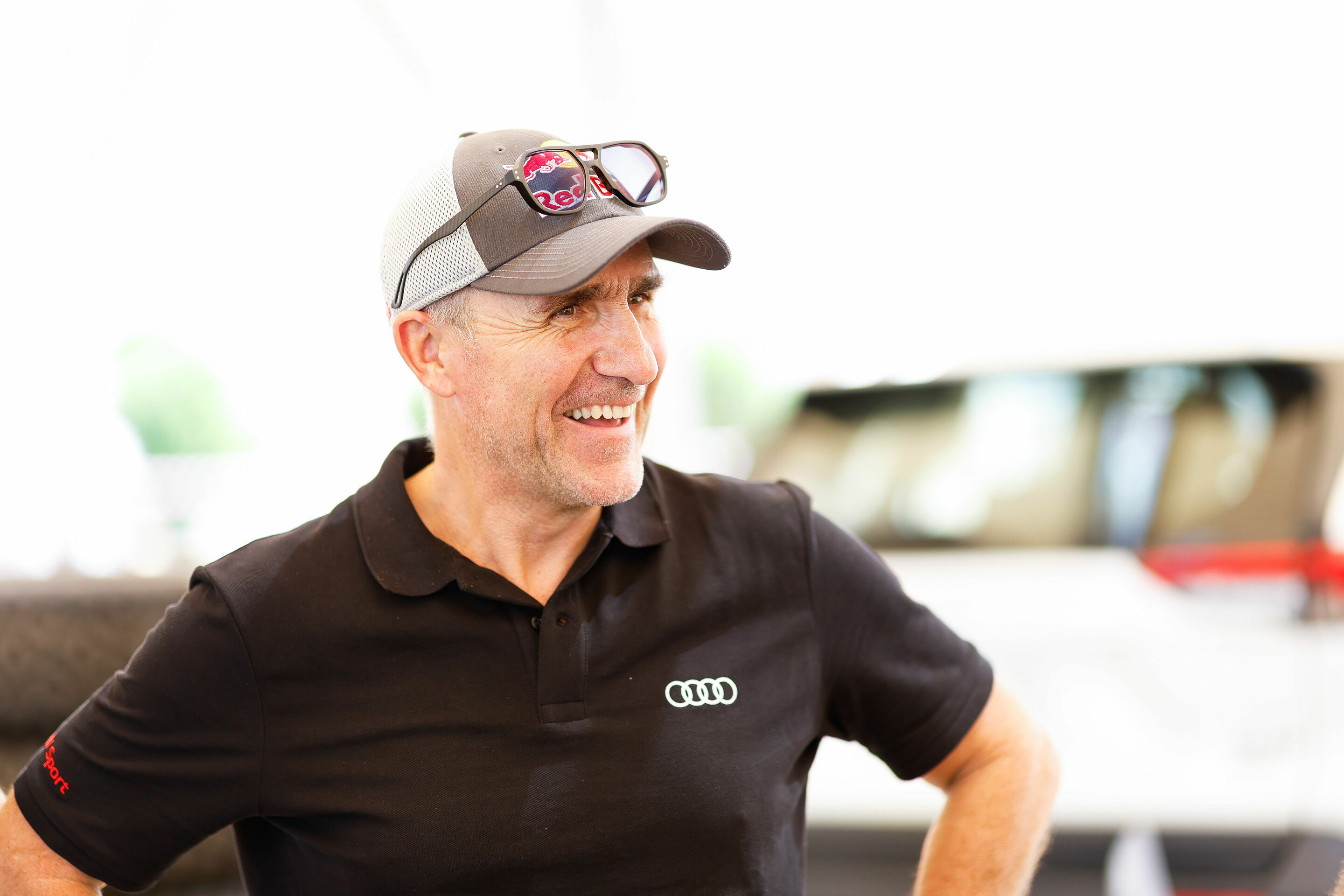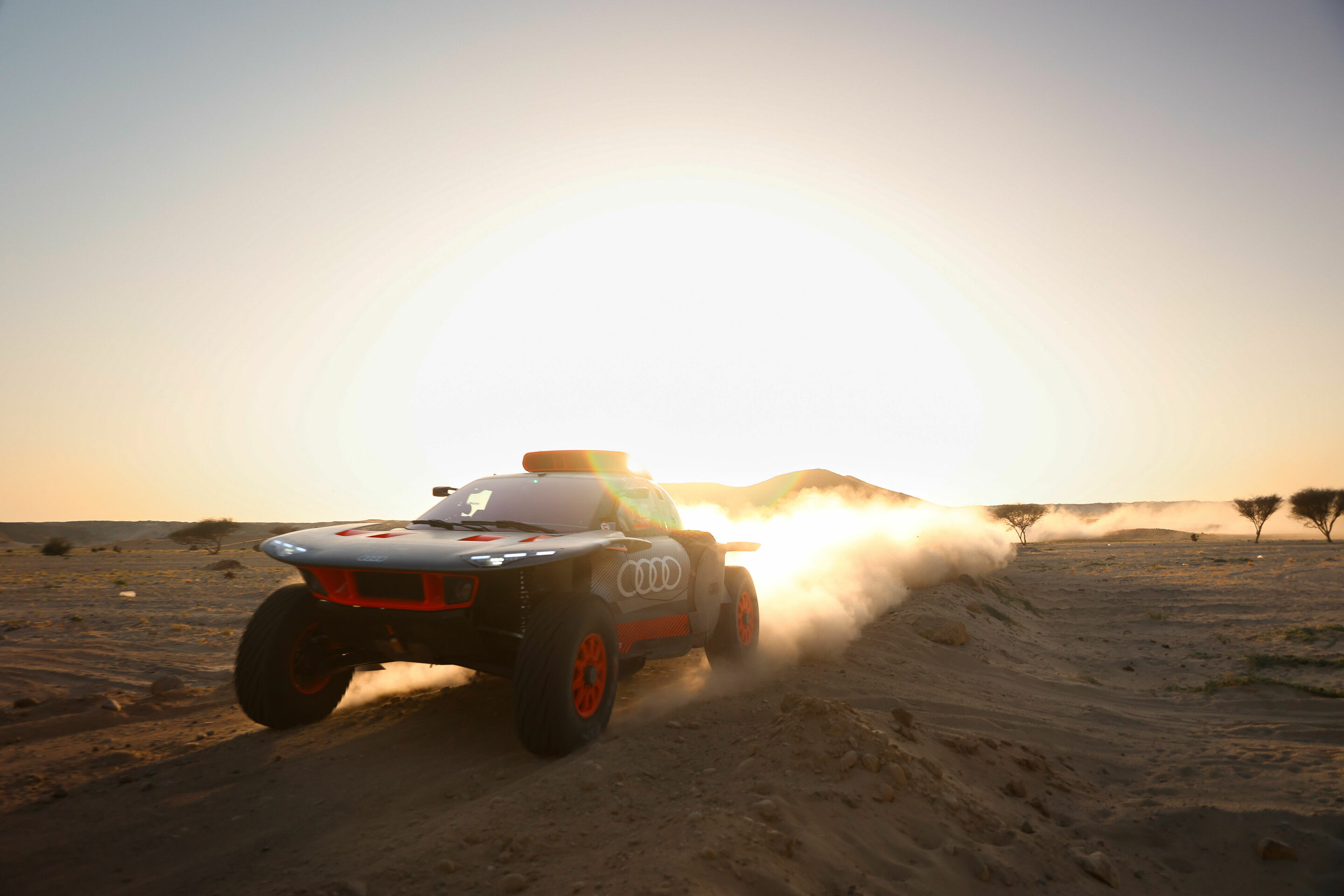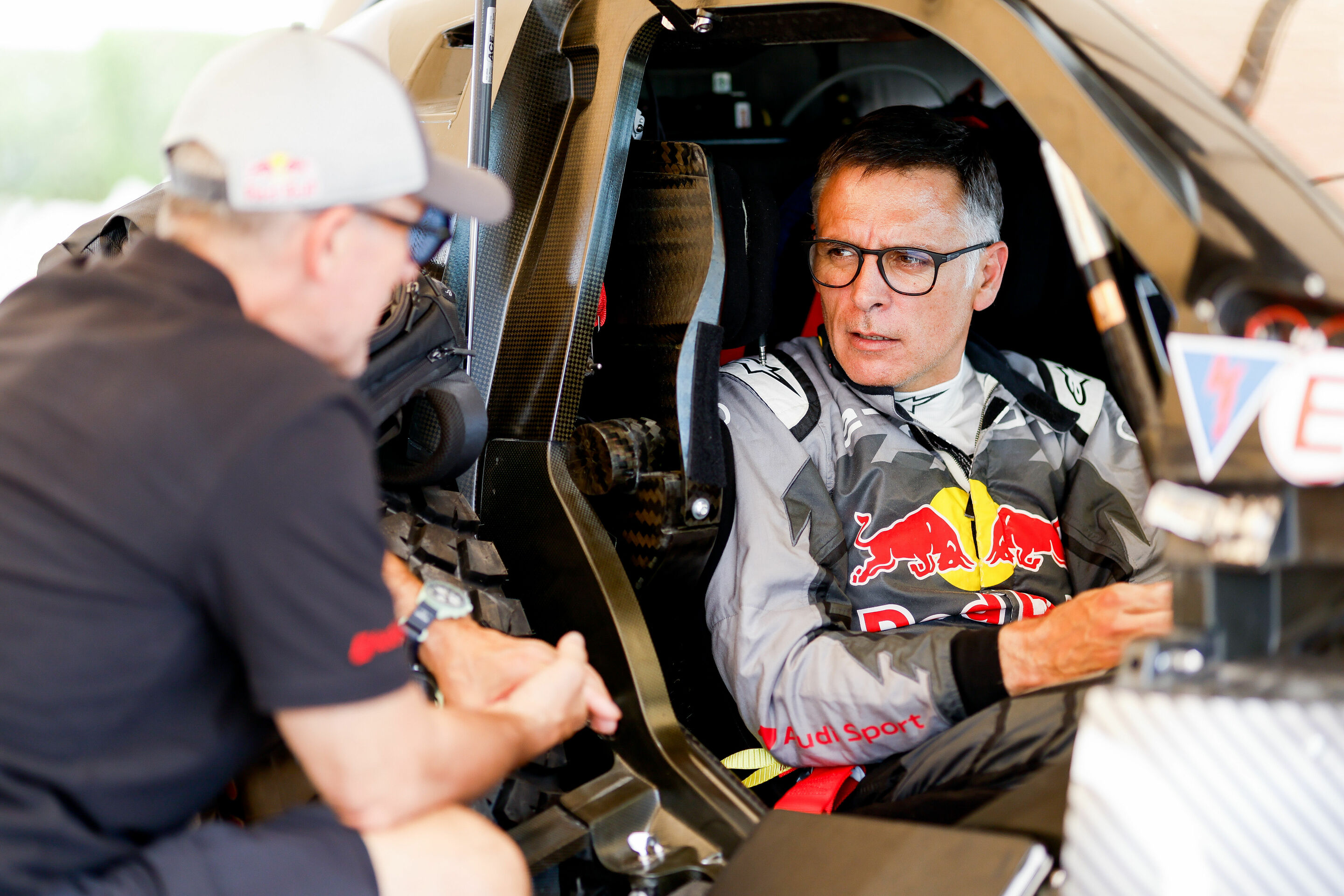Consistent root cause analysis at Audi Sport’s Dakar test
- Search for causes and remedies for blown tires
- At the same time chassis testing on different terrain
- All three drivers and two co-drivers in action during the test
Team Audi Sport has prepared an analytical test for the suspension and tires after the 2023 Dakar Rally. The Audi RS Q e-tron’s record in January included a total of 14 podium results on 15 event days but also various setbacks. While the innovative electric drive concept worked flawlessly, tire failures clearly set back the three driver teams Mattias Ekström/Emil Bergkvist, Stéphane Peterhansel/Edouard Boulanger and Carlos Sainz/Lucas Cruz in the most important competition of the year. In addition to the analysis carried out since January, the team completed its investigation of the causes in May with a test in Saudi Arabia.
Head of Audi Motorsport Rolf Michl had set his squad a clear target: “Our technology, the entire team and our drivers and co-drivers have the potential to drive at the very front. Our stage results proved that. So it was all the more annoying that tire failures and other problems set us back in January. Now we have to find solutions. Our systematically planned test was the next important step on this path after the theoretical analysis.” Team Audi Sport and the three drivers Mattias Ekström, Carlos Sainz and Stéphane Peterhansel spent several days in Saudi Arabia in the third week of May working for this purpose.
Using two different types of tires from BF Goodrich, the official tire supplier of the Dakar Rally, the team compared the performance and attempted to recreate the conditions of January’s damage in order to develop countermeasures. Various tracks were available for this purpose: On a sprint track of just under 13 kilometers with gravel and sand, the engineers examined performance aspects. Over a distance of around 110 kilometers on a stony course, the focus was on durability and damage patterns. Also on the agenda was work with the shock absorbers, as the chassis has to behave reliably but also consistently and efficiently on the rough surfaces. Measurement sensors in the chassis for loads and accelerations supported this analysis.
Sven Quandt, Team Director of Q Motorsport, summed up: “The test organization was definitely demanding. Audi Sport supported this testing perfectly. We were able to reproduce tire failures during the runs, which is pleasing in that it allows us to analyze very well the conditions and circumstances that caused us headaches in January. Closely related to this are the suspension settings, which we have varied. We haven’t worked out a one hundred percent solution yet, but the test was valuable and we’re on the right track.” Carlos Sainz was fully fit again after his accident in January and competed with regular co-driver Lucas Cruz. Stéphane Peterhansel also took part in the test, but also with co-driver Lucas Cruz. “It was the right decision not to use Stéphane’s regular co-driver Edouard Boulanger again yet after his injuries in January, as the test tracks were physically very demanding. After all, every additional day without extreme stress supports the further healing process,” says Rolf Michl. Mattias Ekström was involved as standard with co-driver Emil Bergkvist.
In Saudi Arabia, Team Audi Sport experienced temperatures of up to 42 degrees Celsius and repeatedly strong winds. For the workforce, the conditions were correspondingly demanding. The Audi RS Q e-tron with electric drive and its low-emission energy converter powered by reFuel completed the test without complaint. This reliable run over a distance of 2,568 kilometers not only confirmed the maturity of the innovative concept. It also allowed the busy program to be systematically completed. In addition to technical insights, engineers and drivers also benefit from the productive testing in Saudi Arabia in terms of decision-making and driving style. After the return, a comprehensive analysis of all recorded data is scheduled. In this way, Audi and Q Motorsport are continuing to prepare the next steps in development and organization for the 2024 Dakar Rally.
Additional content:
>> Inside Dakar Show covering the test
>> Photo gallery
